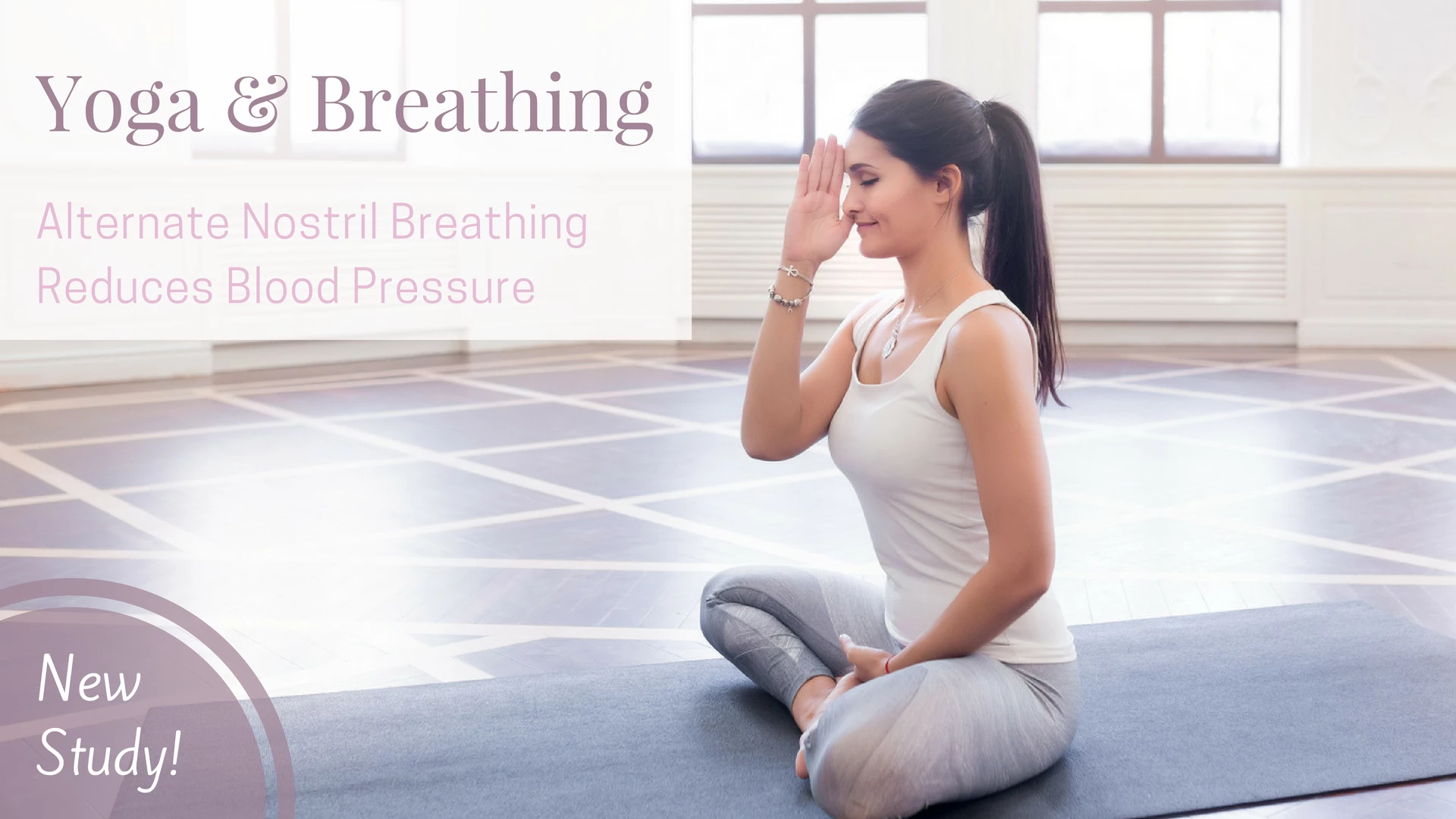Yoga and Breathing: Study Shows Alternate Nostril Breathing Reduces Blood Pressure and Improves Performance

Nadi Shodhana, or alternate nostril breathing, is a simple pranayama technique that can have powerful effects on the nervous system, helping calm the mind, reduce stress and improve focus.
All day long we naturally breathe more through one nasal passage than the other, rhythmically alternating side to side throughout the day in what is known as a “nasal cycle.” At any given moment, one nasal passage is more congested while the other is free and clear, and then it switches every two to two-and-a-half hours or so. Studies show that the alternating swelling and shrinking are related to the sympathetic nervous system and parasympathetic nervous system, influencing autonomic physiological functions such as heart rate, blood pressure, and respiratory performance.
Scientists have discovered that when the right nasal passage is dominant, there is more sympathetic nervous system (fight-or-flight) activity. When the left nasal passage is doing most of the breathing, there is increased parasympathetic nervous system (rest-and-digest) activity. So just as breathing switches back and forth between the right and left nasal passages, our nervous systems alternate between more active and restful states. The effects of breathing through a particular nostril have been extensively studied, and indicate that the sympathetic and parasympathetic nervous systems can be selectively stimulated by controlling the breath through either the right or left nasal passages.
Studies Show Connections Between Nadi Shodhana and the Autonomic Nervous System
Well then, how would alternating the flow of air through the left and right nostrils affect the autonomic nervous system?
Researchers at the Patanjali Research Institute in India found that 18 minutes of alternate nostril breathing in 26 healthy volunteers effectively decreased blood pressure and improved performance of skilled motor tasks requiring hand-eye coordination, repetitive motor activity, and focused attention. (In a different study, researchers also found that alternate nostril breathing lowers heart rate, with a shift toward parasympathetic dominance, in experienced yoga practitioners, opposed to those with no yoga experience.)
The researchers then wanted to know if alternate nostril breathing could still lower blood pressure while improving performance on a vigilance test that required sustained attention and alertness, qualities that are generally associated with increased sympathetic nervous system activity (including heart rate and blood pressure).
The study was designed to test participants’ response to a vigilance-specific task—one that participants hadn’t done before—while noninvasively measuring their blood pressure in relation to alternate nostril breathing. Their objective was to determine if 18 minutes of alternate nostril breathing could prevent an increase in blood pressure, or sympathetic nervous system activity, while participants completed the vigilance test.
A reliable digit vigilance test, with the numbers one to nine randomly arranged in 50 rows per sheet with 30 digits per row, was given to 15 volunteers who were instructed to cancel only two digits (six and nine) as quickly as they could without canceling out any other digits. Performance was based on the total time taken to complete the test and the number of errors made. Each participant was assessed in three different sessions: alternate nostril breathing, simple breath awareness and sitting quietly as a control, all for 18 minutes seated upright with their eyes shut. Blood pressure and vigilance performance were simultaneously assessed before and after the interventions.
The results: All 15 volunteers performed a digit vigilance task with significantly less time, along with a decrease in blood pressure, after 18 minutes of alternate-nostril breathing.
While scientists still need to study the mechanisms by which alternate nostril breathing improves efficiency in a vigilance-specific task, it is known that vigilance is influenced by psychological factors such as stress (negative effects) and motivation (positive influences). A different study, conducted with army personnel who practiced multiple yoga techniques, including alternate nostril breathing, showed improved performance in a cancellation task requiring focusing and shifting attention, while their state of anxiety decreased. The suggestion is that alternate nostril breathing may reduce stress and anxiety, thus improving vigilance performance while preventing an increase in sympathetic nervous system activity.
Interested in more information on this topic? Read this article from YogaUOnline and Olga Kabel – Optimizing Brain Function: How Yoga can Help Integrate Your Right and Left Brain.
 Meagan McCrary is an experienced yoga teacher (E-RYT 500) and writer with a passion for helping people find more comfort, clarity, compassion, and joy on the mat and in their lives. She is the author of Pick Your Yoga Practice: Exploring and Understanding Different Styles of Yoga a comprehensive encyclopedia of prominent yoga styles, including each system’s teaching methodology, elements of practice, philosophical and spiritual underpinnings, class structure, physical exertion and personal attention. Currently living in Los Angeles, Meagan teaches at the various Equinox Sports Clubs, works privately with clients and leads retreats internationally. You can find her blog, teaching schedule, and latest offerings at www.MeaganMcCrary.com.
Meagan McCrary is an experienced yoga teacher (E-RYT 500) and writer with a passion for helping people find more comfort, clarity, compassion, and joy on the mat and in their lives. She is the author of Pick Your Yoga Practice: Exploring and Understanding Different Styles of Yoga a comprehensive encyclopedia of prominent yoga styles, including each system’s teaching methodology, elements of practice, philosophical and spiritual underpinnings, class structure, physical exertion and personal attention. Currently living in Los Angeles, Meagan teaches at the various Equinox Sports Clubs, works privately with clients and leads retreats internationally. You can find her blog, teaching schedule, and latest offerings at www.MeaganMcCrary.com.
Resources



